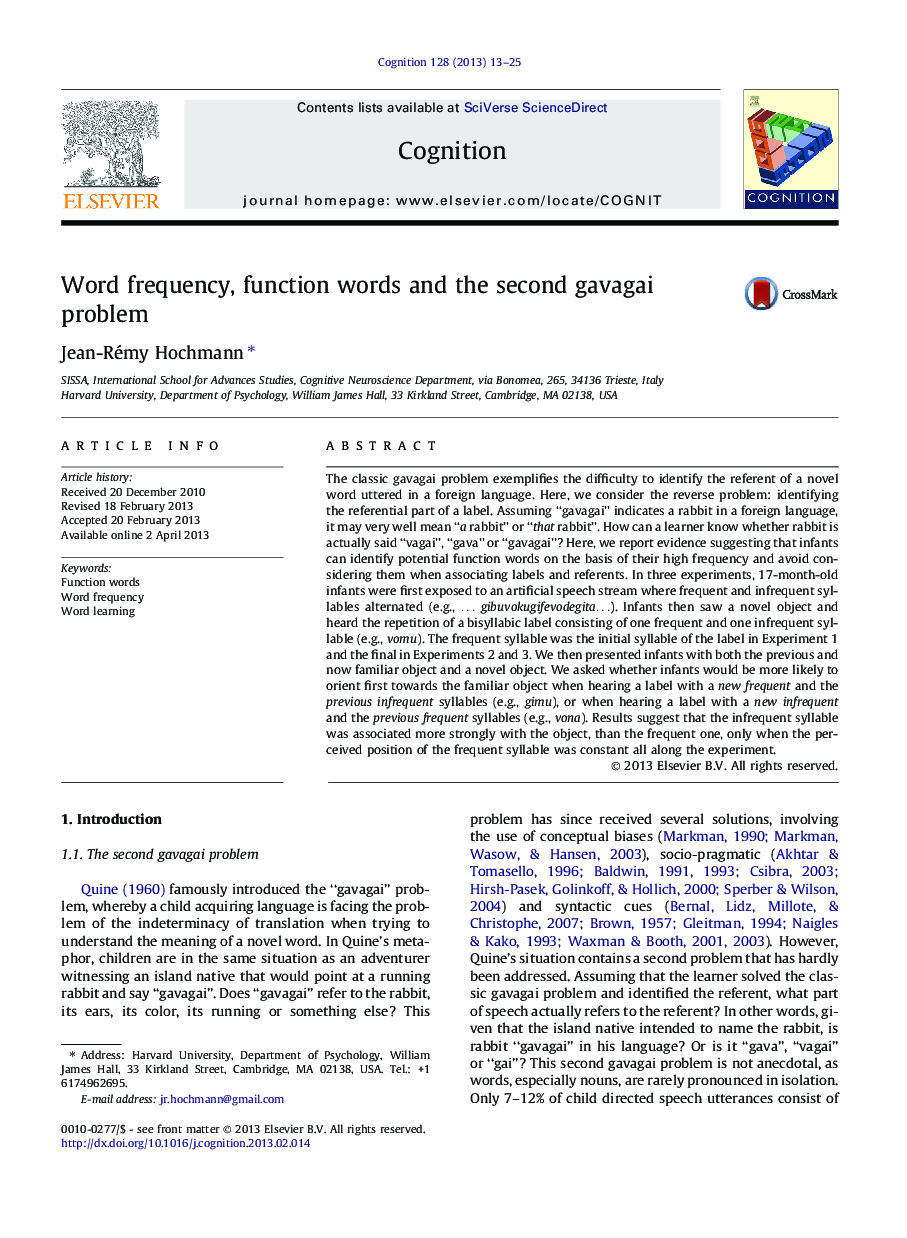| کد مقاله | کد نشریه | سال انتشار | مقاله انگلیسی | نسخه تمام متن |
|---|---|---|---|---|
| 926774 | 921901 | 2013 | 13 صفحه PDF | دانلود رایگان |

• We study how syllable frequency constrains word-object associations.
• Infants associate with an object an infrequent rather than a frequent syllable.
• We observe an effect of position (initial or final).
• Infants may use frequency as a cue to identify function words.
The classic gavagai problem exemplifies the difficulty to identify the referent of a novel word uttered in a foreign language. Here, we consider the reverse problem: identifying the referential part of a label. Assuming “gavagai” indicates a rabbit in a foreign language, it may very well mean “a rabbit” or “that rabbit”. How can a learner know whether rabbit is actually said “vagai”, “gava” or “gavagai”? Here, we report evidence suggesting that infants can identify potential function words on the basis of their high frequency and avoid considering them when associating labels and referents. In three experiments, 17-month-old infants were first exposed to an artificial speech stream where frequent and infrequent syllables alternated (e.g., … gibuvokugifevodegita…). Infants then saw a novel object and heard the repetition of a bisyllabic label consisting of one frequent and one infrequent syllable (e.g., vomu). The frequent syllable was the initial syllable of the label in Experiment 1 and the final in Experiments 2 and 3. We then presented infants with both the previous and now familiar object and a novel object. We asked whether infants would be more likely to orient first towards the familiar object when hearing a label with a new frequent and the previous infrequent syllables (e.g., gimu), or when hearing a label with a new infrequent and the previous frequent syllables (e.g., vona). Results suggest that the infrequent syllable was associated more strongly with the object, than the frequent one, only when the perceived position of the frequent syllable was constant all along the experiment.
Journal: Cognition - Volume 128, Issue 1, July 2013, Pages 13–25